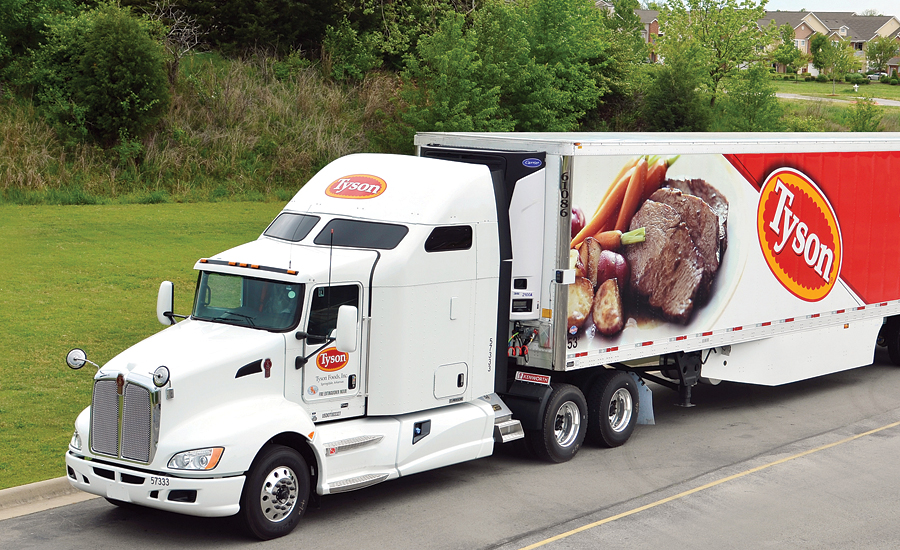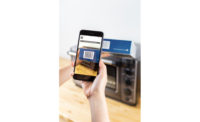Tyson Foods, Springdale, Ark., is one a producer of meat and poultry products sold to retailers and foodservice operators in the United States and approximately 130 countries. As a long-time user of GS1 Standards, Tyson continues to respond to various requests from trading partners and data recipients for product and traceability information that are often not aligned.
Solution
Tyson continues to further leverage its investments in implementing GS1 Standards from GS1 US, Lawrenceville, N.J., particularly GS1-128 barcodes, for case-level traceability to help enable stability and reliability for a variety of business processes. Building on its history with the Foodservice GS1 US Standards Initiative, Tyson is also an active participant in the GS1 US Retail Grocery Initiative helping to drive the adoption of GS1-128 barcodes for cases, Serial Shipping Container Codes (SSCCs) for pallets and the use of the Global Data Synchronization Network (GDSN) to share essential product attributes with trading partners and ultimately consumers.
Benefits
Tyson’s pragmatic approach to leveraging standardized data attributes and data exchange scenarios helps the company conduct business with the velocity today’s industry landscape demands. It can accurately invoice customers for variable-weight products, decrease disputes and increase customer satisfaction, streamline product receipt processes, improve productivity and conduct market withdrawal or product recalls efficiently. In addition, by sharing reliable and robust product data with distributors, retailers and operators, Tyson is helping them deliver a positive consumer experience while also enhancing its own brand equity.
“With GS1-128 barcodes, we can now track products by batch/lot number, anywhere between our processing facilities, distribution centers and stores or restaurants,” says Paul Lothian, business solutions architect for Tyson.
In the beginning
Tyson first implemented GS1 Standards in the early 90s as part of its poultry business.
“A customer buying our variable-weight products asked that we identify these products with GTINs (GS1 Global Trade Item Numbers) encoded in GS1-128 barcodes on our cases,” says Lothian. “By scanning the barcodes, the customer could much more efficiently confirm receipt of our shipped products. By supporting our customer, we soon realized just how valuable GS1 Standards could be for our own operations.”
With 37 years at Tyson, Lothian has broad experience in the company’s operations and decades of addressing the “ups and downs” of the food industry. He notes that in the last 10 years especially, trading partner expectations for sharing detailed product data have been primary drivers for relying on GS1 Standards for streamlining operations.
“As food manufacturers, we can no longer afford to work independent of our trading partners. We must communicate all the way up and down the supply chain to successfully move products at the speed needed today,” he adds.
Tyson has also automated its warehousing systems by integrating GS1 Standards into its distribution center processes.
“We implemented the SSCC to identify our pallets for improving our shipping operations. Over the years, using standards has helped us better configure pallets for customer orders and manage our inventory with visibility into our supply chain,” says Lothian.
Taking the lead
Tyson is a member of the Foodservice GS1 US Standards initiative, and assumed a leadership role in the GS1 US Retail Grocery Initiative with Gary Cooper, Tyson’s chief information officer, on the initiative’s Leadership Executive Committee.
“The Retail Grocery Initiative provides us with a unique industry opportunity to not only better understand our retailer customers’ priorities, but to also share best practices with other manufacturers,” says Cooper. “Working with members of the initiative, we have gained alignment with and consistency across our customer base regarding the product data attributes we provide, and this has meant substantial efficiencies in how we operate, and ultimately, how we can best serve consumers—whether online or in stores and restaurants.”
“The collaborative approach of the initiative’s workgroups has increased awareness about how to solve some of our most pressing issues with standards,” adds Lothian. “These are forums where everybody in retail can contribute to the process of using a single set of standards, which is critical since it’s getting harder and harder to sustain support of different customer requirements.”
A case for GS1-128 barcodes
In addition to supporting customer requests, Tyson is using GS1-128 barcodes on cases for internal benefits. In the meat and poultry business, pricing is driven by weight in many instances, so the company encodes product weight in its case-level barcodes.
“Since every case’s weight can vary, we scan to accurately invoice our customers for variable-weight products. This has greatly reduced the number of questions and disputes with customers over invoices,” says Lothian.
For fixed-weight products, Tyson randomly scans the barcodes of cases throughout its fulfillment process to confirm the accuracy of shipped products.
“This built-in step helps us verify that our business processes are working as intended,” says Lothian. “In short, case-level barcodes help us ship the right products to the right place at the right price and accurately bill for these products—very important requirements for keeping customers happy.”
Using case-level barcodes has also empowered Tyson and its customers when it comes to traceability and recalls.
“The end of the line—when the product arrives at a customer’s delivery point —was once the biggest blind spot for us,” says Lothian. “With GS1-128 barcodes, we can now track products by batch/lot number, anywhere between our processing facilities, distribution centers and stores or restaurants. By scanning GS1-128 barcodes in our DCs, we can use this information to make the recall process much simpler, much faster and much more precise. Recall information can now be retrieved electronically—something that once took days and was very labor intensive.”
Achieving velocity with stability
In addition to using SSCCs and GTINs to identify pallets and cases of products, Tyson leverages Advance Ship Notices (ASNs) internally from shipping to receiving location, and also with some customers to help ensure accuracy of deliveries.
“With standards and automation, it takes a fraction of the time once required to complete the receiving process at our distribution centers,” says Lothian. “Since 1994, we have essentially doubled the pounds we ship to and from those DCs with the same level of labor. This represents a significant improvement in productivity as well as customer service.”
For Tyson, “stability” is perhaps the most compelling reason for using GS1 Standards and continuing to expand their use throughout its operations.
“For instance, we’re still using the exact same pallet label in our poultry business that we designed in 1994—a design that has had a lifetime in excess of 20 years, which means significant savings in avoided replacement costs,” says Lothian. “If you take the time to implement GS1 Standards the right way, you don’t have to modify it, fix it over and over.”
Another example is the worker incentive programs Tyson put in place that wouldn’t be possible without its automated systems and use of GS1 Standards.
“Standards are a prerequisite in many cases for moving forward with improvements in our business,” says Lothian. “The world of food is moving at lightning speed these days. We’re working in a very open supply chain, which calls for open standards. To exist in this environment, companies need to integrate GS1 Standards at all levels within their supply chain.”
Extending the benefits of standards for a positive online experience
Benefits of GS1 Standards don’t stop in the physical world of supply chain operations.
“Consumers expect to buy nearly everything online today—even perishable goods,” says Evan Fernando, lead of Tyson’s eCommerce Enablement Initiative. “When we started our e-commerce initiative, we soon realized that a positive consumer experience is not possible, much less sustainable, if the back-end product data is not clean and complete.”
As an early adopter of the GDSN, Tyson had been synchronizing its product data (such as dimensions, weight) with many of its retailers for years, but as consumers turn to buying groceries online and demanded more information about these products, the company is stepping up to the challenge of providing additional attributes.
In 2014, Tyson extended the GDSN’s use across its entire product management and marketing organization to provide consumer-essential data attributes to retailers. Key to the successful engagement of the product organization was helping them understand the significant sales opportunities and revenue impact of data quality practices.
“Being part of the GS1 US Retail Grocery Initiative has helped us tremendously to share and gain information and best practice guidance to support our data quality efforts,” adds Fernando. “We found that GS1 Standards like the GDSN have provided us with a very stable foundation from which to build solutions within our business. We save time, money and other resources when we don’t have to ‘reinvent the wheel’ each time.”



